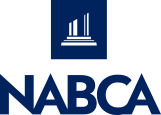AUSTRALIA - The Guidelines and the accompanying Logo Pack have been months in the making and are designed to make it as easy as possible to get labeling right.
This April the dam levels in the Western Cape slumped to a low of just 18% and South Africans were bracing themselves for Day Zero.
In a major move, Constellation Brands has announced that it will name Bill Newlands as CEO, replacing Rob Sands, effective March 1. Newlands is currently Constellation’s president and COO. Sands will become chairman of the company, replacing his brother Richard, who will become executive vice chairman.
MIAMI & DALLAS--(BUSINESS WIRE)--Oct 15, 2018--Southern Glazer’s Wine & Spirits (“Southern Glazer’s”)—the world's pre-eminent distributor of beverage alcohol—today announced that it has appointed Ryan DeVecchio to the position of Vice President and General Manager of New England, effective immediately.
The wine industry scored a small win in Sacramento recently, bringing a handful of post-Prohibition laws up to date in the age of social media.
Britain’s £2 billion gin industry shows no signs of slowing down and now gin makers across the county have united to call on the Chancellor to freeze spirit duty.
William “Bill” Coors, the former chairman of the Adolph Coors Company, died Saturday at the age of 102.
Diageo’s The Future of Drinks trends session at its World Class global bartending finals in Berlin earlier this week predicted that low and no alcohol alternatives would continue to grow, with younger consumers driving the change.
Total beer volume dropped 1.1% last year to 2.8 billion 2.25-gallon cases, the Beverage Information Group's 2018 Beer Handbook reported. That amounts to a fifth consecutive decline in total U.S. beer consumption.
As part of their global expansion, MHW has also announced that craft spirits leader, Templeton Rye, will be the first major brand distributed to European markets through their new service platform.

